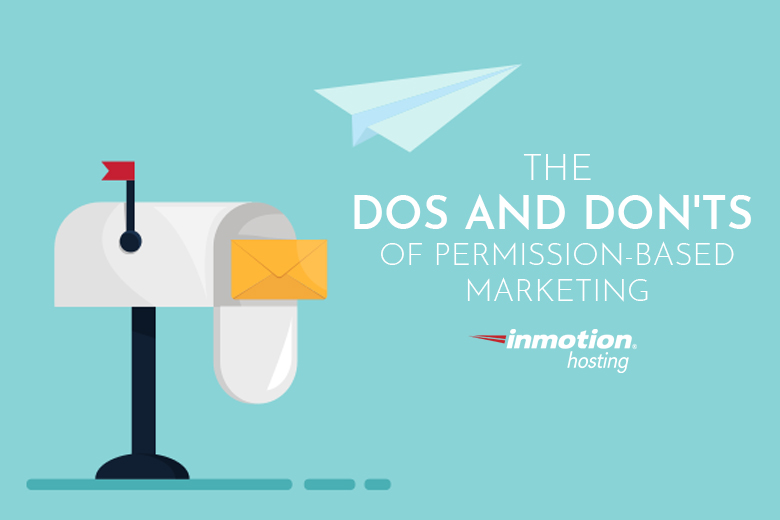
Permission-based marketing is a common but often misunderstood term. If you get it right, you can earn high open and click-through rates on campaigns, driving incredible sales and revenue from your marketing efforts. Those who misunderstand the term, however, will miss out.
So what is permission-based marketing?
It’s a form of marketing where you are given permission to send an email to an individual. Anti-spam laws and especially General Data Protection Regulation (GDPR) requires that you have direct permission from your customer to contact them. It also includes how their data can be used.
Permission-based marketing works like this: you offer something of value like a seminar signup, ongoing offers, helpful content, a free report or download, video access, exclusive offers, etc. in exchange for them providing their email address and other data. It’s an equivalent exchange of value.
Do Make It Personal
Generic messages frustrate your subscribers. Personalization builds a bridge of trust, so you want to make sure your emails are more personal.
One way to do that is to segment your list into groups. For instance, let’s say you have two primary groups of shoppers (you will have more!). One is always looking for your bargain deals and the other is interested in new items in your online store. The bargain shoppers would have the bargain shopper label or tag while the other type would have their own label.
This kind of segmenting makes personalization easier. That way, the email they receive actually matters to them.
Don’t Automate Too Much
You’ll want to balance an active touch with automated content. Those spur-of-the-moment messages and individual replies can really build customer loyalty.
Do Email With Consistency
Be consistent in your email efforts without being annoying. Don’t leave your customers hanging. Let them know you’re still there if they ever need anything.
Don’t Email Too Often
If you send emails too often, you may see a huge unsubscribe rate or worse–be marked as SPAM. It takes time, effort, and testing to find out how often your audience wants to be contacted. Find a good rhythm and stick to it.
Do Include Unsubscribe Options
The GDPR requires that you have an unsubscribe option in your email newsletter. Luckily, all list manager services offer “unsubscribe” by default.
Don’t Transfer or Re-subscribe Subscribers Without Permission
Permission is still important. When you switch to another newsletter company, you have to get permission for the transfer. It’s against the GDPR and American SPAM laws to re-subscribe people without their permission, so don’t do it. This includes those who use social media connections to forcefully subscribe individuals to their content.
Do Build Quality Subscribers
Permission-based marketing lets you find your target customer. The loyalty factor means they are more likely to open your email, interact, click, and buy from you. In addition, they have superior word-of-mouth capability. Quality subscribers are built through nurturing. It’s not something that happens overnight. This leads to our next “don’t.”
Do Not Buy Lists
If you buy a list from someone to use (sometimes known as “lead” lists), you’re violating SPAM laws. This means someone either scraped emails from websites or took customer information and sold it to someone else.
Do Include Your Contact Information
You are required to supply a physical address or PO Box for your company by law. Other contact information like social media accounts, and your website can also be used in your newsletters. You want to give a bit of trust to receive a bit of theirs.
Don’t Use SPAM Trigger Words
Hubspot has an amazing list of SPAM trigger words for you to look through. Make sure your subject line contains words and phrases that get your message across without being flagged for SPAM.
Permission-based marketing isn’t as difficult to understand as you may think. Taking these dos and don’ts into consideration will take you and your marketing efforts to the next level.